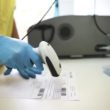
[Image courtesy of Christiaan Colen on Flickr, per Creative Commons 2.0 license]
Makers of devices such as manual surgical instruments and mechanical wheelchairs will have 2 extra years to get these devices submitted to the Global unique device identification database (GUDID), FDA announced last week.
In a letter to industry, FDA announced plans to push label, GUDID submission, and standard date format requirement dates to September 2020. Direct mark requirements will go into effect in September 2022. The agency also said it will release a guidance document regarding its enforcement decision, but wanted to inform industry as early as possible.
The announcement is a direct response to industry needs as well as an acknowledgment of the sheer diversity of products and complexity of the process. All class III and class II device labels already display UDIs and are contained within GUDID. As of May 1, 2017, more than 4,000 device labelers had submitted 1.4 million records to GUDID.
However, according to the letter from Thomas P. Gross, director of the office of surveillance and biometrics at CDRH, “With successes come challenges, and implementing UDI is no exception.”
FDA pointed out that labelers asked for extensions to meet UDI requirements. It also noted the “identified complex policy and technical issues that need resolution” such as how UDI applies to medical procedure trays that contain multiple devices and instruments.
FDA said its goal is to ensure UDI data is standardized so that healthcare practitioners can use it effectively. “We realize that a truly successful UDI system of national device identification depends on UDI being integrated into electronic health information throughout our health care system, including in the supply chain, registries, and electronic health records.”
FDA says it plans to achieve this goal for the higher risk devices already in the system before adding lower-risk medical products.
[Want to stay more on top of MDO content? Subscribe to our weekly e-newsletter.]






